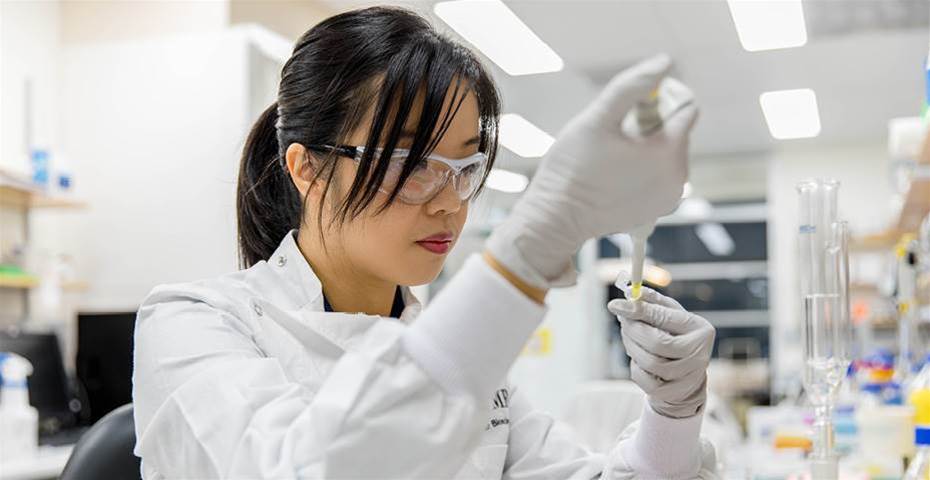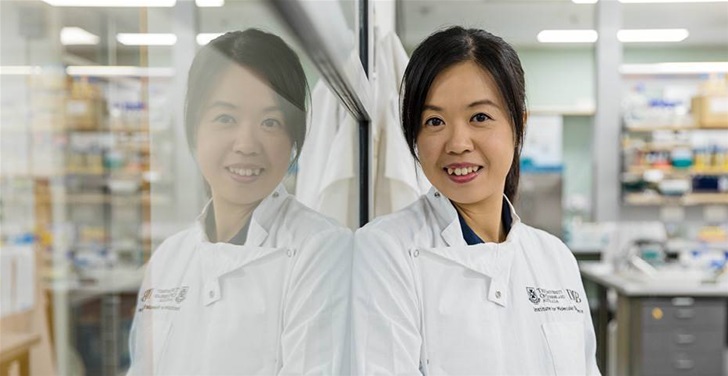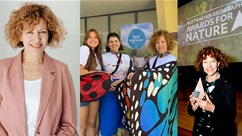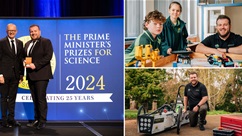KZ: Hi Yanni! What do you do at work?
Y: I study toxins; the natural molecules secreted by organisms that are toxic or injurious to other living organisms. I’m interested in knowing what toxins do (the ‘harm’ they can cause) and how they do it. I am specialised in the study of toxins derived from animal venoms, such as spiders, scorpions, centipedes, sea anemones and more. These animals use venoms to capture prey and defend themselves, so venoms are important for their survival. Venoms are cocktails of thousands of toxins – the better and more effective toxins can be, the better chance the animals have to survive. The ‘effectiveness’ of a toxin is dependent on its 3-dimensional structure. Many toxins are built from smaller blocks of molecules. The way that the blocks are packed together gives them unique 3D structures, which determines their functions. My job studying these structures makes me a structural biologist. I derive the structure of these interesting toxins and investigate how the structures influence their functions. For example, venom from one spider would contain thousands of toxins and each toxin can have very different functions. One may cause pain in other insects, and another may paralyse them. These two toxins would have a different structure and visually look very different; though they are so small that you can’t really see them, even with some of the best microscopes in the world.

KZ: What inspired your decision to work in this industry, and to study molecular structures of venom peptides?
Y: Honestly, my interest in science originated from all the TV dramas I watched when I was young. I was always fascinated by CSI-style shows and I thought working in a laboratory in those white coats was super cool. I started doing science subjects and was always curious about how things work, especially chemistry and biology. I wanted to know how each part of our body functions and what can go wrong to make us sick. In the beginning it was all about my curiosity. After my PhD, I joined a group of scientists at UQ who are specialised in animal venoms. Together, we identified venom peptides (aka toxins) that have interesting and unique effects on our bodies. I learned that venom peptides do not only cause pain; some also target specific parts of our body and have the potential to cure many devastating diseases, such as chronic pain, stroke and epilepsy. Suddenly, my research was no longer only about satisfying my curiosity. We may actually develop something from animal venoms that can cure diseases! As a structural biologist I carefully study how changes in the structure of these venom peptides affects their activity in our body, and try to design modified (better) peptides that can target diseases with little side effects. Learning about venom peptides does not only tell us about how venomous animals produce venoms (their weapons) to help them survive. We can also take advantage of our understanding and turn it into medicine that may save billions of people who are suffering.
KZ: What is the best thing about your job, and the hardest?
Y: I suppose there are not many jobs out there that can satisfy my curiosity about living organisms, and at the same time giving me hope that I can contribute in developing medicines that will help people. This is the best feeling in the world for me. The hardest thing is to get everyone as excited as I am about my work. Sometimes it is not easy to convince people that our work is important.

KZ: What has been the highlight of your career so far?
Y: I am not so sure. Every structure that I’ve solved, every article I published, every question that I found an answer for in my research; these were all a highlight. Perhaps I am still waiting for an achievement in my career that I would proudly call it a peak, but right now I am just glad that I can continue contributing to the science community with my ‘little highlights’.
KZ: Can you share an interesting behind the scenes fact about your job?
Y: The scientists that you see on posters (often professors wearing a lab coat holding a test tube or a flask of coloured solution in a lab) have likely not been in the laboratory for months/years. As the head of the laboratory (which professors often are), they spend more time developing ideas and managing the laboratory, rather than actually conducting the experiments in the lab. Those blue or red coloured solutions in the photos are also usually random dyes. The solutions we work with are mostly colourless.
KZ: Are you involved in any other projects, or working in any other roles?
Y: As I am working in a university, I from time to time have to help and tutor students. I help developing practical classes for undergraduate science students and I help other postgraduate students (e.g. PhD/master students) with their research projects. With my expertise in structural biology, I also collaborate with pharmaceutical companies from other countries in their drug development projects.
KZ: Did you study any subjects or courses as a child that gave you skills you use at work?
Y: In Year 8, I had my first practical biology class. The task was to dissect a cow eye. I remember many of my classmates found it very nasty and refused to do the work, but I found it fascinating. I observed the eyeball, the sclera, the lens, and the optic nerves – it was so much fun. I suppose that made me realise how fun it is to know about biology, and science in general.
Read more of our interview with Dr Yanni Chin in the September 2020 issue of K-Zone, on sale now!










Comment Now!